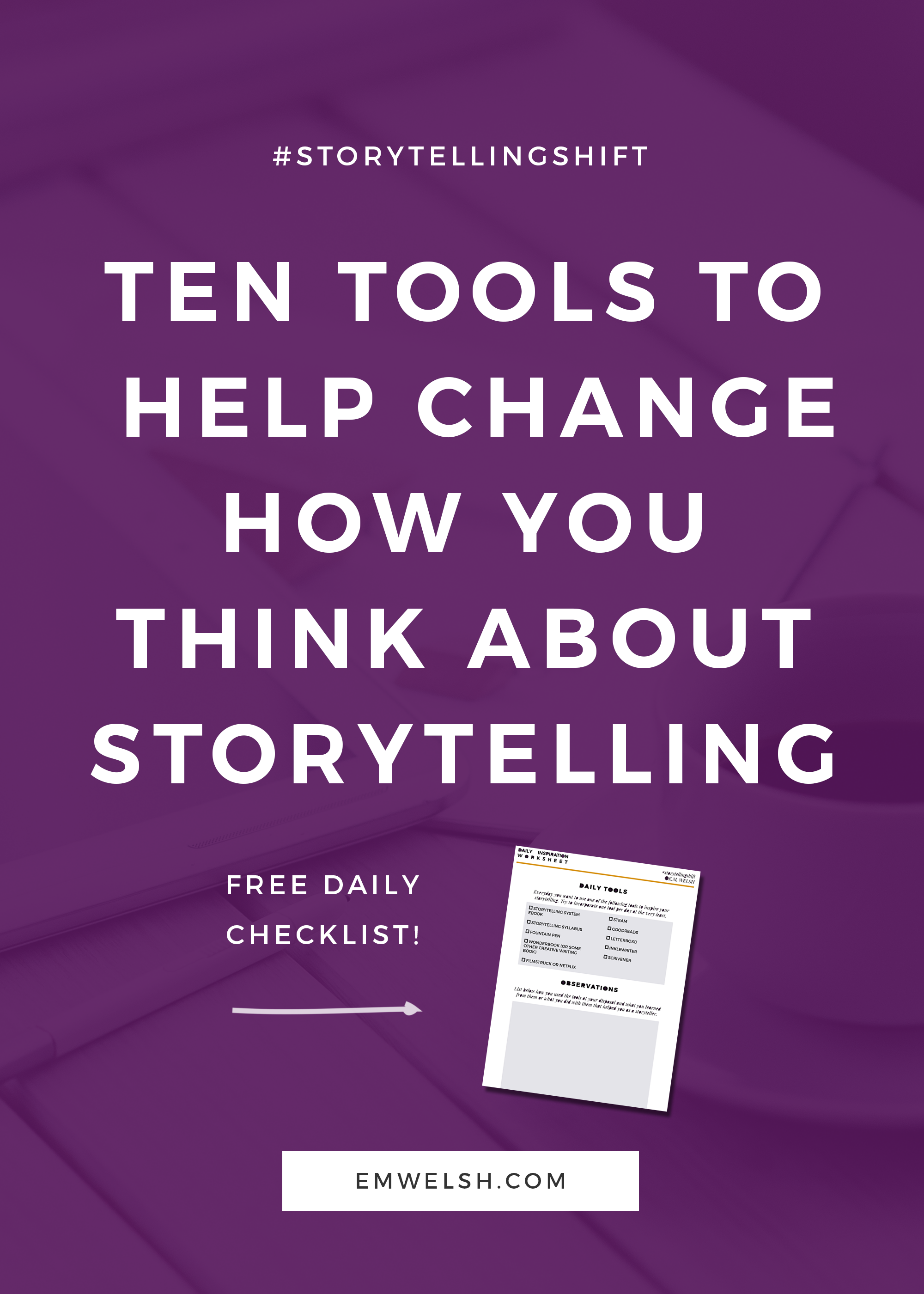6 Story Outline Techniques for Writers
/When you have a story idea in mind, there can be nothing more exciting. There is so much possibility ahead, so many different ways you can envision your story coming together, that it can be difficult to sit down and outline the story, especially if you don't like traditional outlining.
That's why learning different outlining techniques are important. Quickly you'll learn that you don't need to follow a structure to outline your story, but can mix and match other techniques to find the best outlining method for you.
That said, the six different outlining techniques you can approach any storytelling with, be it screenwriting, video game writing, playwriting, and prose writing are:
Keep in mind that these are outlining techniques, not storytelling structures. If you are looking for a breakdown of the Three Act structure, you will not find that here. Instead, you'll find six different ways to approach outlining from the notecard method to the synopsis.
Using this guide you can learn more about the different techniques, then find one that best suits your storytelling style!
1. Traditional outline
The traditional outline is the most common outlining technique. It involves using a storytelling structure, such as the Three Act structure, to guide your outlining process.
Structures used for high-level outlines:
- Three Act
- Eight Sequences
- Hero's Journey
- Freytag Model
To write a traditional outline, simply choose a structure you want your story to follow, then use the plot points in the story structure to guide your process. Though these skeletal outlines are usually big picture plot points, depending on your outlining style you can adapt this to include specific chapters, scenes, and even paragraphs underneath each plot point like so:
ACT ONE
- Beginning
- Chapter One
- Scene 1
- Scene 2
- Chapter Two
- Scene 1
- Chapter One
- Inciting Incident
- Second Thoughts
Follow the structure of your choice, filling out the main plot points (Beginning, Inciting Incident, Second Thoughts) first. This will help you see the full picture of your story easily, then from there you can add chapters, scenes, and so forth.
Who it is for:
- People who struggle with structure and want guidance to ensure their story is following a proven approach to narrative
- People with a strong idea as to what their story is about who like to follow outlines as they write
Pros:
- Uses proven story structure to guide your narrative
- High-level enough to allow deviation from the outline
Cons:
- Hard to outline if you like to write by the seat of your pants or want flexibility in your outline
- Can feel surface level to those who want a more in-depth outline
2. Mind map
Mind maps are likely the most messy outlining method, but they also enable a lot of creative exploration. You won't see typical outlining structures here, but instead a free form of exploration that can be helpful for different storytellers. Unlike high-level outlines, this approach uses no structure, but instead uses free association to find the story.
To create a mind map, choose a theme, character, or even scene for your story. Write this in the center of a sheet of paper, and then from there draw lines that branch out from the center idea. This could be character traits, possible events, things related to the theme—you name it.
Continue to create subbranches until you either run out of space, or have formulated a character.
If this method appeals to you, but you'd like more structured guidance, look to the Snowflake Method created by Randy Ingermanson. Using this method, you'll start your story out with a log line or one sentence summary, then expand it into a paragraph, then move onto listing character names, then their summary, and so forth.
You can do something similar using a mind map, starting with the basic story in the center and expanding out with the following things to brainstorm and outline at the same time:
- Characters
- Summary, External, Internal
- Settings
- Themes
- Conflicts
- Main, Sub
Know that there is no wrong approach to this method, and it's all about starting from a very small idea and watching it expand on its own. It's okay to have more than one draft of an outline using this method—or any method!
Who it is for:
- People who hate outlines and want to explore new possibilities for their story
- People dealing with a creative block
Pros:
- Free-association can leads to new, creative ideas
- Makes it easy to explore subplots, side characters, and other themes
Cons:
- Doesn't provide a clear structure to follow
- Messy and difficult to nail down on a single plot line
3. Notecard
Outlining your novel, movie, or even video game can be highly satisfying using the notecard method as it allows you to create a flexible outline without rewriting the entire thing.
To create an outline using the notecard method, grab a stack of notecards and begin writing scene or chapter ideas on each card. You can include things like the character, location, or plot line if you'd like. It can also be helpful to highlight these things if you're juggling multiple storylines.
You can either work with a summary of the story in mind or just go off of scenes you want to see in the story.
Once you've done this, spend time laying out the cards and determining the best order for your story. You can mark spots where you feel a scene is missing with a blank notecard and note potential things that belong there.
This method also works well when combined with other methods. For example, if you're following the Three Act structure, you can create other notecards that say "Act One" and "Inciting Incident" and build your story around these, moving notecards around to explore different ways to tell your story.
Who it is for:
- People who want a flexible outline to follow
- People writing story with layered subplots and characters, various timelines, or a non-linear story
Pros:
- Allows for flexibility and organization
- Can be used for high-level and in-depth scenes
Cons:
- Hard to see the overall picture for bigger projects and difficult to scan for flow of the story
- Easy to get overwhelmed with different possibilities that may not be the best choice for your story
4. Synopsis
The synopsis approach to writing an outline is exactly what it sounds like. You write out your story the same way you'd write out the back cover of a book, only you list everything that happens. (On the back of a book, spoilers are typically avoided.)
If it helps, you can first write out a log line, which is a one sentence summary of your story in its most simple form. From there, you'll take the log line and expand it into a large summary of your narrative. There is no structure or formal outline, only a summarized version of your story for you to follow.
This method of outlining is great for a more casual approach, as it allows you to see the big picture and make sure your narrative works on a high level. If you need help seeing typical formats of synopses, look to IMDb.com's movie synopses and the backs of books for help.
Who it is for:
- People who crave a guideline while they write without the strictness of a high-level outline
- People with a general idea of what they want to happen in their story
Pros:
- Helps establish a strong central story
- Highlights themes and motifs naturally
Cons:
- Doesn't offer in-depth, scene-by-scene outlining options
- Can lead to an unbalanced narrative
5. Free-writing
The free-writing form of outlining has no structure, and essentially involves you journaling things you want to happen in your story. There is no right or wrong way to do this, as it is a free-form method that encourages exploring ideas.
To get started, simply grab a piece of paper and begin jotting down things you want to happen in your narrative. You can discuss who you want your character to be, you can journal as them, you can do whatever you like, so long as you keep to your intention of discovering your story. If you do this, you'll likely uncover many things about your narrative, be it who your character is, their backstory, or even the ending of your movie!
Free-writing is much like the mind map approach to outlining, only it offers less structure. It also gives you opportunities to notice minute details in your story and in a way "take note" on your narrative.
Who it is for:
- People who need to turn an idea into a story concept
- People who like to write by the seat of their pants, but want a jumping point for the process
Pros:
- Provides a creative way to brainstorm and build out an idea
- Allows for exploration of story without limitation
Cons:
- Offers no tactic for structure, so it can lead to a plotless story
- Can be a waste of time if not done with intention
6. Plot line method
The plot line method is not common, but offers a great way to juggle either multiple storylines or subplots. It is a method I've discussed in writing TV pilots, as A, B, and C plots are common terms in the industry.
To use the plot line method, you'll first start with your A plot, which is your most central plot point. From there, B, C, and so forth are subplots or other storylines you wish to follow. How much you choose to focus on these in the story (if you have more C plot than B plot) doesn't matter, as they should all build and tie into the A plot.
- A plot: central story or conflict
- EX: Woman confronts a global crisis
- B plot: sub plot
- EX: Woman works to take care of her mother at home
- C, D, E, etc: other sub plots or story lines
After you've decided the different plot points, you'll then divide your story up into acts, scenes, or whatever structure you decide. From there, list all the plot lines and what will happen that is relevant to the act:
ACT ONE
- A plot - Woman receives news of global crisis
- B plot - Woman has to pick up prescription for her mother
Doing this will allow you to diversify your story lines, moving them around in the narrative, while also making sure they're resolved.
Who it is for:
- People telling stories with multiple plot points and storylines
- People who struggle to keep track of subplots
Pros:
- Easy way to keep track of plot points and build out story
- Offers organization, but still flexible
Cons:
- Doesn't focus on structure
- Can be useless for stories with less subplots or side stories
Remember that there is no right or wrong outlining technique. One method may work for some, and another for others. You may even find that some techniques only work for particular stories and that you may have to switch things up to find the best version of your story.














